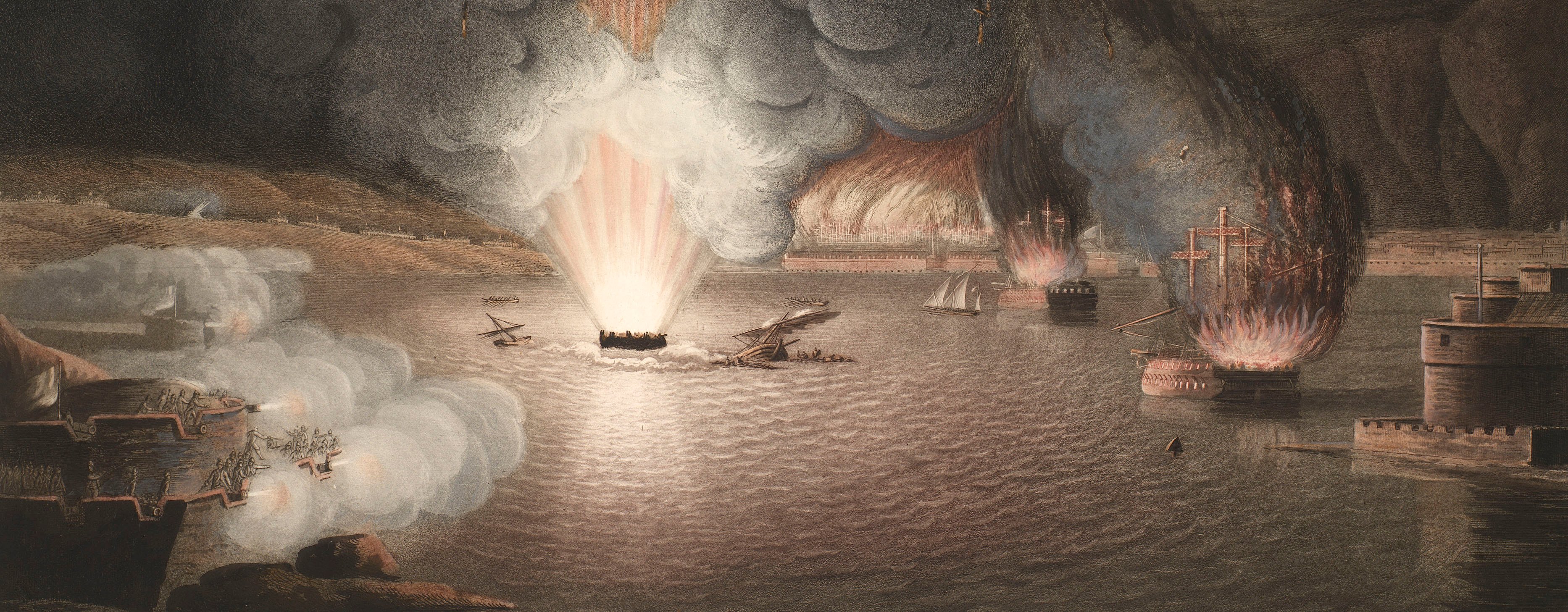
French Revolutionary Wars (1792-1802)
Maps and prints of naval engagements collected by George III during the decade of war
Map of encampment near Penn, 1800 (Penn, Buckinghamshire, England, UK) 51°37'52"N 00°40'36"W
1800 or laterPencil, pen, ink and watercolour on two sheets of thick paper, joined | Scale: 1:10,518 approx. | RCIN 735083.1.b
This map will have been made from an original reconnaissance type survey which was taught at the Royal Military College by the French emigré officer, General François Jarry, and attended by Thomas Birch. Birch went on, as a member of the newly formed Staff Corps, to perform surveying and reconnoitering during the Peninsular War for which he was commended by Sir Robert Wilson (Le Marchant 1841, p.86). Birch was a close friend of the founder of the Royal Military College, Colonel Gaspard le Marchant, in whom George III took a personal interest.
The accompanying explanatory text (RCIN 735083.1.a) was written in or after 1815, by which time Birch had been appointed (4 June 1814) Major-General. He may have had the map in his possession at that time, writing the explanation, now at least fifteen years after the event, before presenting it to George III.
This map shows one of the techniques, brought over from France and taught by Jarry, which was used extensively by the Staff Corps for representing the relative height of hills by numbers. Known as 'relative command', because it showed the commanding height of one hill relative to another, it was adopted by the Ordnance Survey from 1803 after it was introduced by one of the OS Surveying Draughtsmen, Robert Dawson, who also taught survey and plan drawing at High Wycombe. Relative Command is combined here with the uncommon technique, in England at this time, of using horizontal hachures.
The encampments and fieldworks shown on this detailed topographical map were probably part of a training exercise for the students at the Royal Military College.
Condition: one fold line; 6.5 cm tear to left edge along fold. Verso: four sealing wax patches to left edge; old paper repair to small tear left centre; surface dirt along top edge.
? Thomas Birch (1771-1847) (draughtsman) [bottom left, below title, in title cartouche:] By T. Birch, Major, 16:th / (or Queens) L:t Dragoons.
Subject(s)
Army-GBWatermark: None visible
Mark, stamped: 1090
Condition: one fold line; 6.5 cm tear to left edge along fold. Verso: four sealing wax patches to left edge; old paper repair to small tear left centre; surface dirt along top edge
Scale: 1:10,518 approx. Scale bar: One Mile [153 mm =]
71.7 x 54.8 cm (neatline)
73.0 x 56.1 cm (image)
73.7 x 56.6 cm (sheet)
Manuscript title:
PLAN / of the / ENVIRONS / of the VILLAGE of / PENN. / March 1800. [bottom left, in oval cartouche]
Annotations:
George III heading: Penn, March 1800.
Other annotations: none.
George III catalogue entry:
Penn A drawn Plan of the Environs of the Village of Penn, with the Chain of Posts in front of the camp at Homer Green, March 1800: by Major T. Birch.
Subject(s)
Penn, Buckinghamshire, England, UK (51°37'52"N 00°40'36"W)
Bibliographic reference(s)
Y. Jones, ‘Aspects of relief portrayal on 19th century British military maps’, The Cartographic Journal, June 1974, pp.1-15
The Royal Military Calendar or Army Service and Commission Book, Third Edition, London (1820), vol. III, p. 386.
D. Le Marchant, Memoirs of the late Major General Le Marchant, Staplehurst, 1841, reprinted 1997, p.86
Page revisions
25 May 2024
Current version






